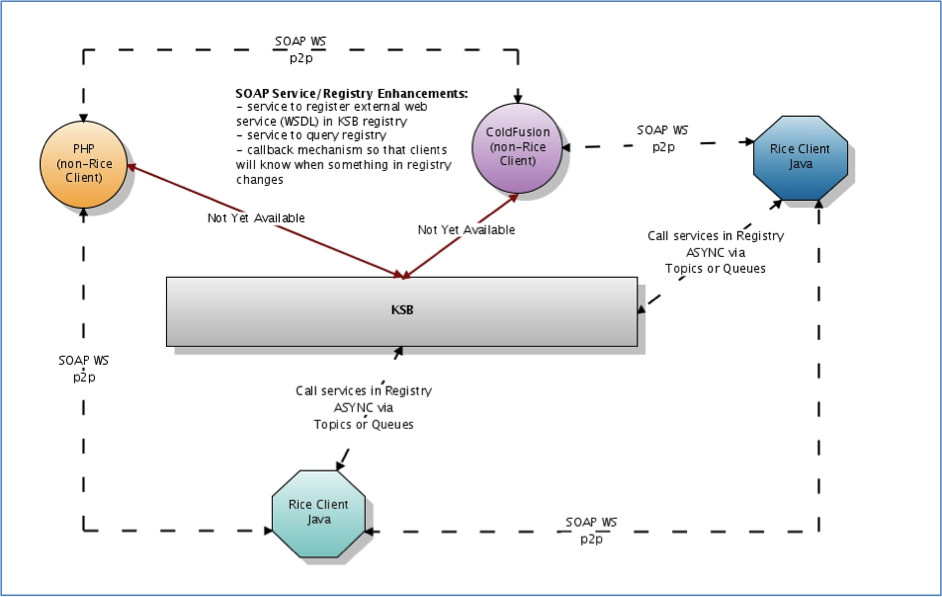Table of Contents
- How to Use the KSB
- Details of Supported Service Protocols
- Configuring the KSB Client in Spring
- Configuring Quartz for KSB
- Acquiring and Invoking Services Deployed on KSB
- Failover
- KSB Exception Messaging
- KSB Messaging Paradigms
- Load Balancing
- Object Remoting
- Publishing Services to KSB
- Store and Forward
- The ResourceLoader Stack
- KSB Security
- Queue and Topic invocation
- KSB Parameters
- JAX-RS / RESTful services
The Kuali Service Bus (KSB) is a lightweight service bus designed to allow developers to quickly develop and deploy services for remote and local consumption. You can deploy services to the bus using Spring or programmatically. Services must be named when they are deployed to the bus. Services are acquired from the bus using their name.
At the heart of the KSB is a service registry. This registry is a listing of all services available for consumption on the bus. The registry provides the bus with the information necessary to achieve load balancing, failover and more.
Typically, KSB programming is centered on exposing Spring-configured beans to other calling code using a number of different protocols. Using this paradigm the client developer and the organization can rapidly build and consume services, often a daunting challenge using other buses.
This drawing is conceptual and not representative of a true deployment architecture. Essentially, the KSB is a registry with service calling behavior on the client end (Java client). All policies and behaviors (Asynchronous as opposed to Synchronous) are coordinated on the client. The client offers some very attractive messaging features:
Synchronization of message sending with currently running transaction (meaning all messages sent during a transaction are ONLY sent if the transaction is successfully committed)
Failover - If a call to a service comes back with a 404 (or various other network-related errors), it will try to call other services of the same name on the bus. This is for both sync and async calls.
Load balancing - Clients will round-robin call services of the same name on the bus. Proxy instances, however, are bound to single machines if you want to keep a line of communication open to a single machine for long periods of time.
Topics and Queues
Persistent messages - When using message persistence a message cannot be lost. It will be persisted until it is sent.
